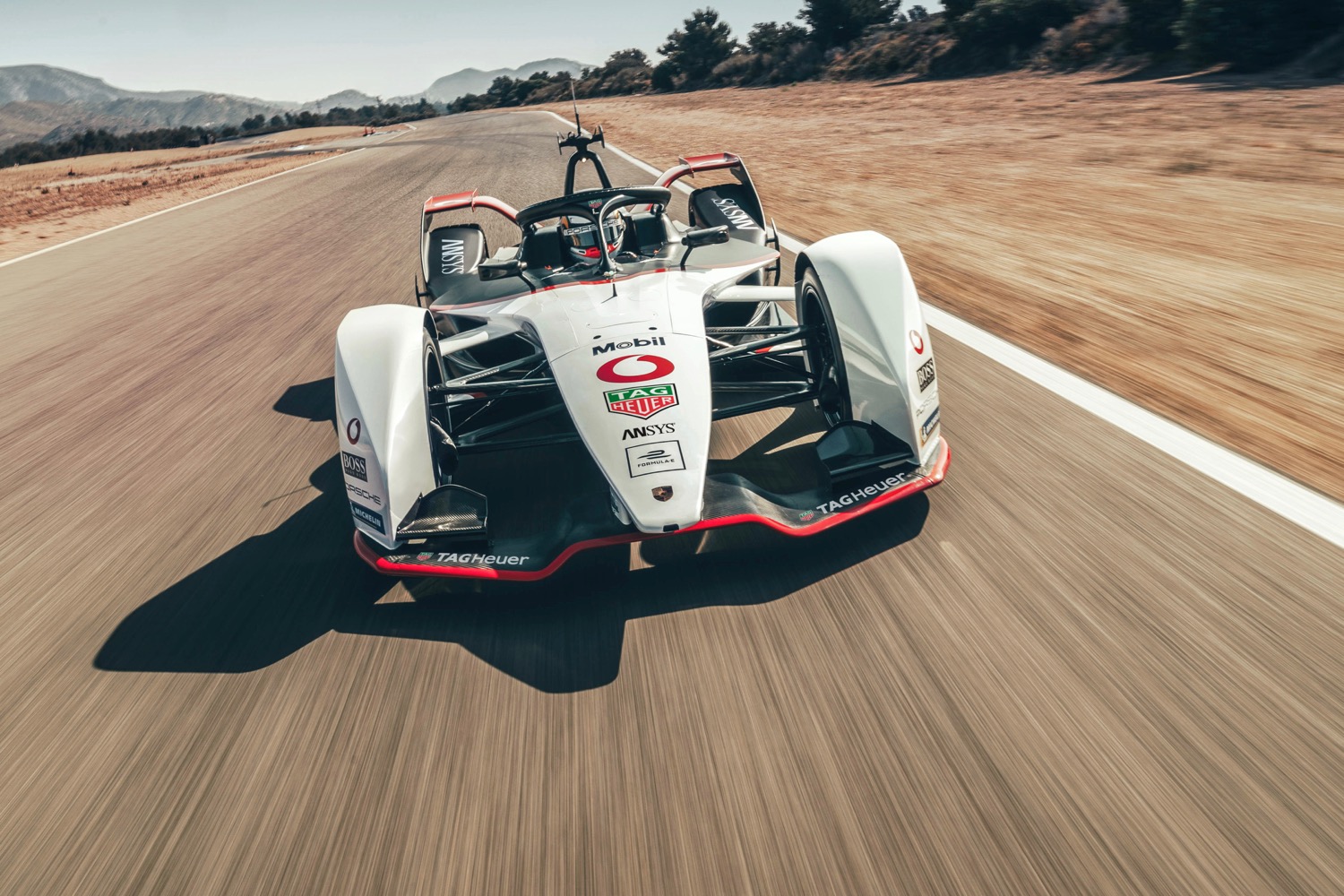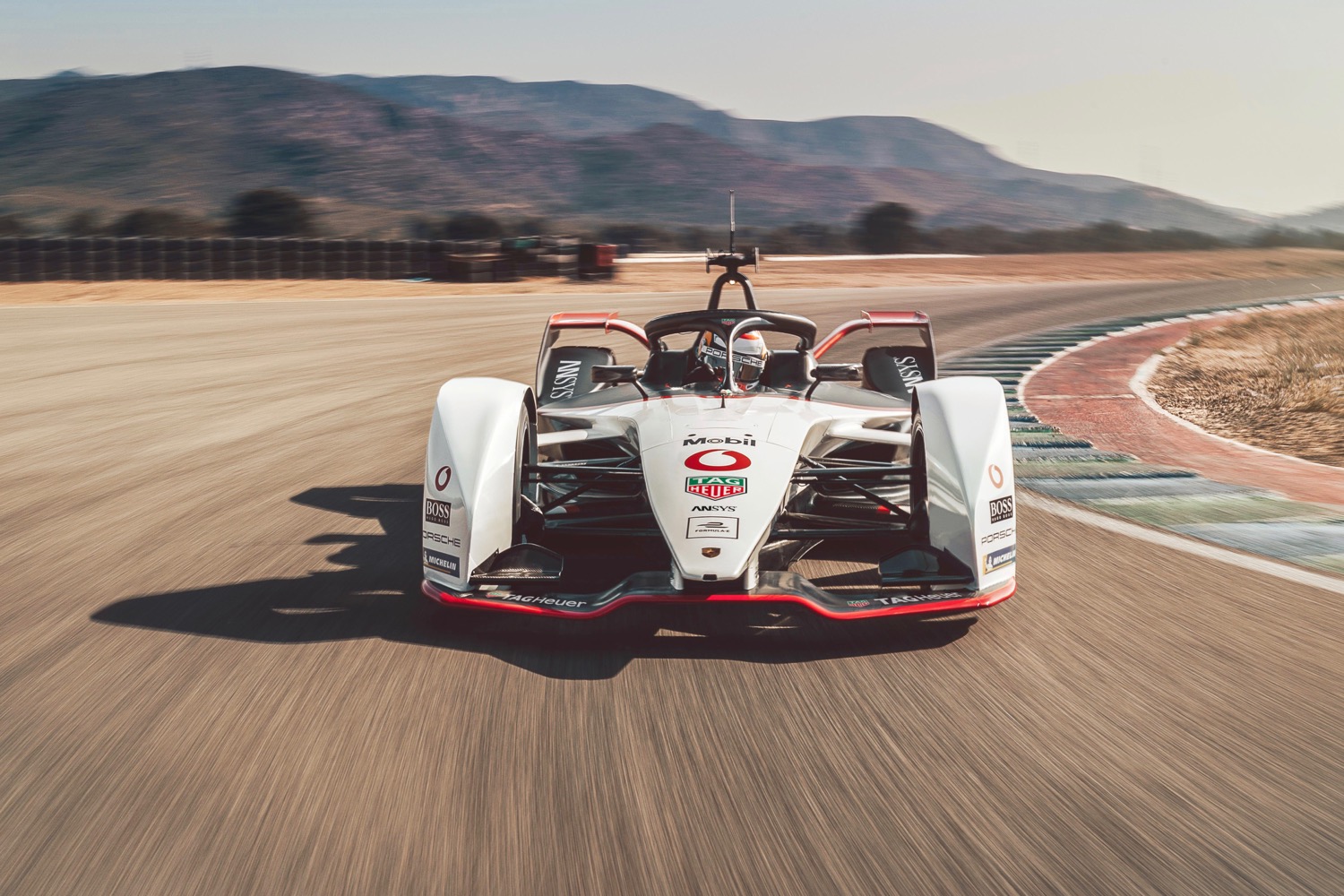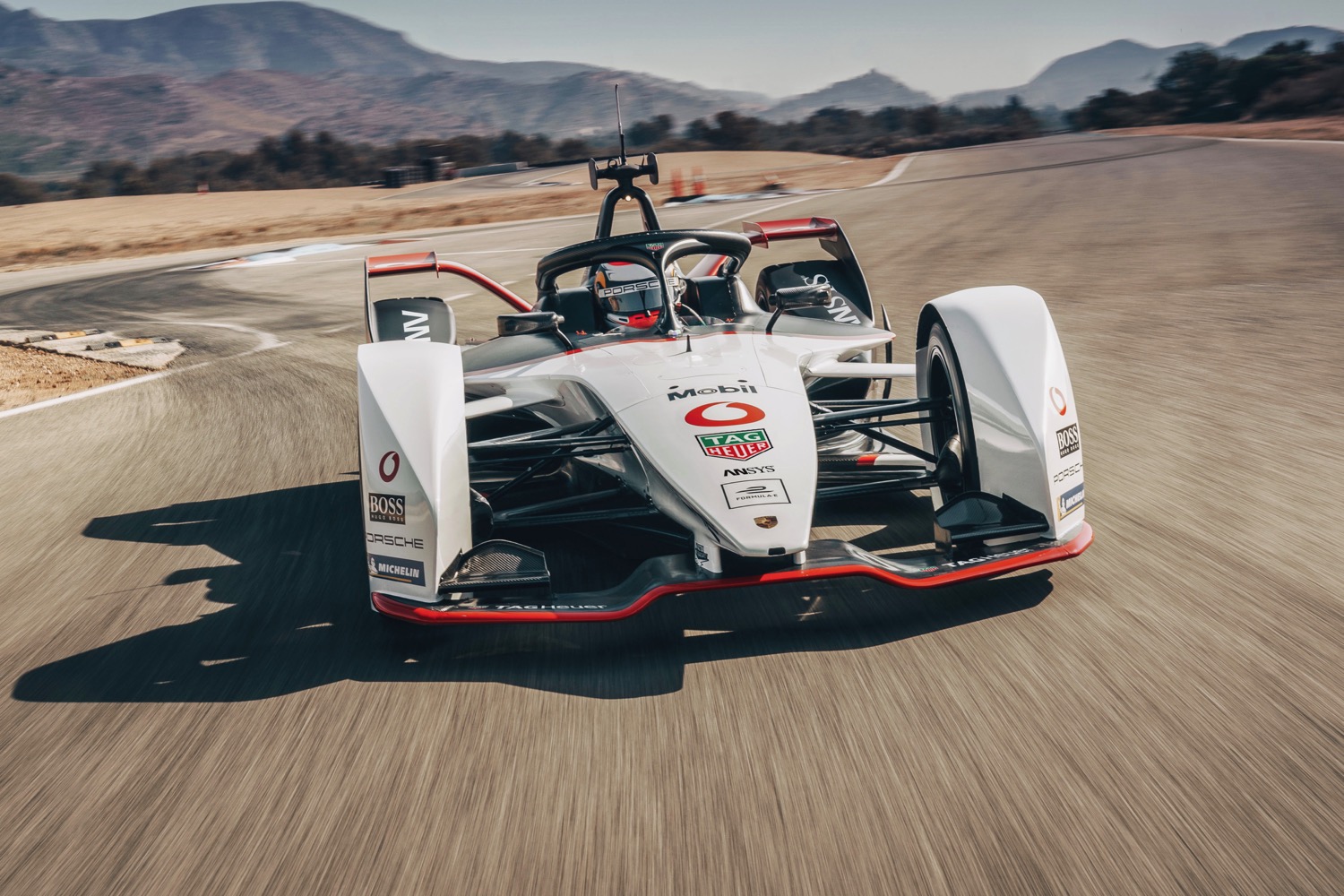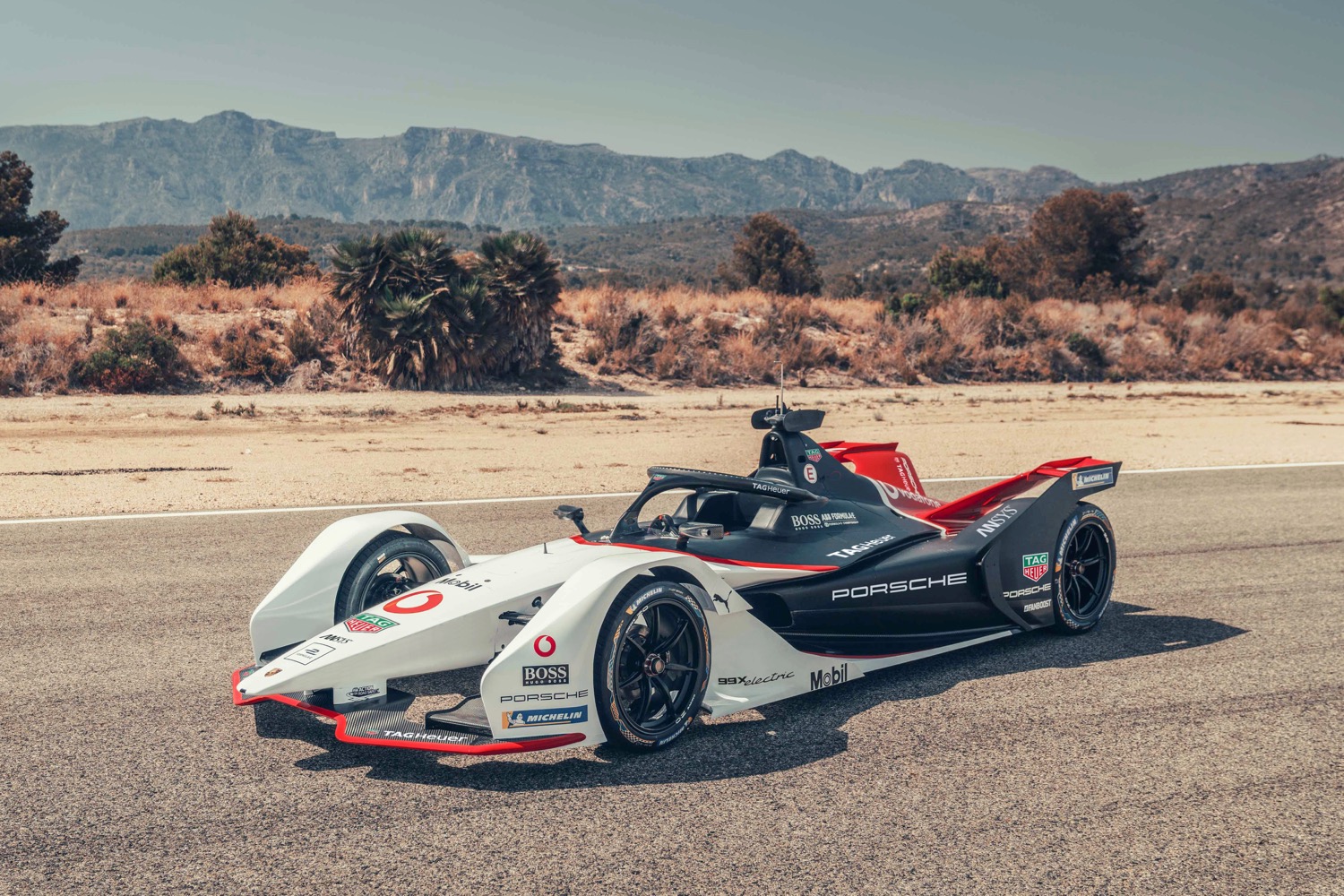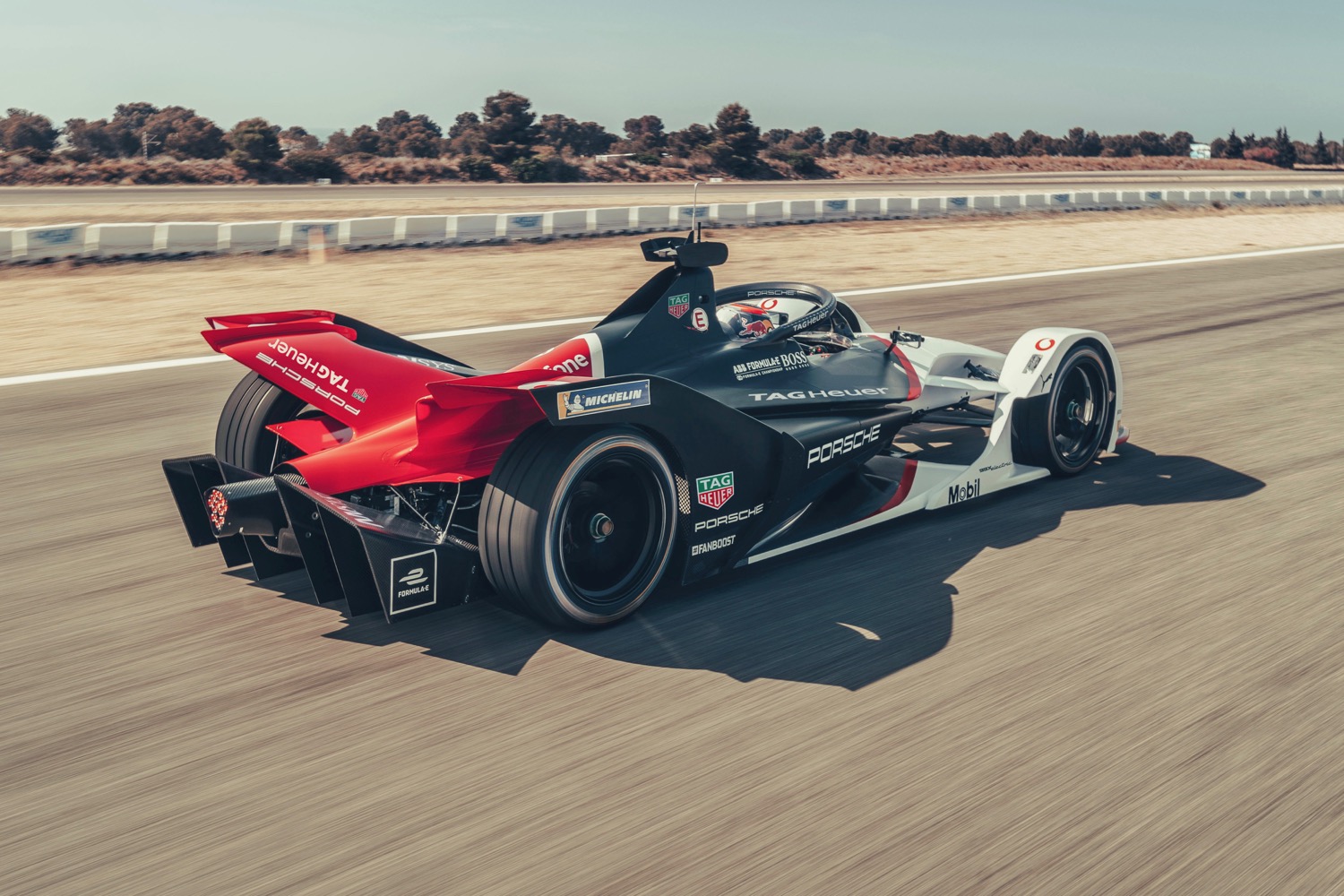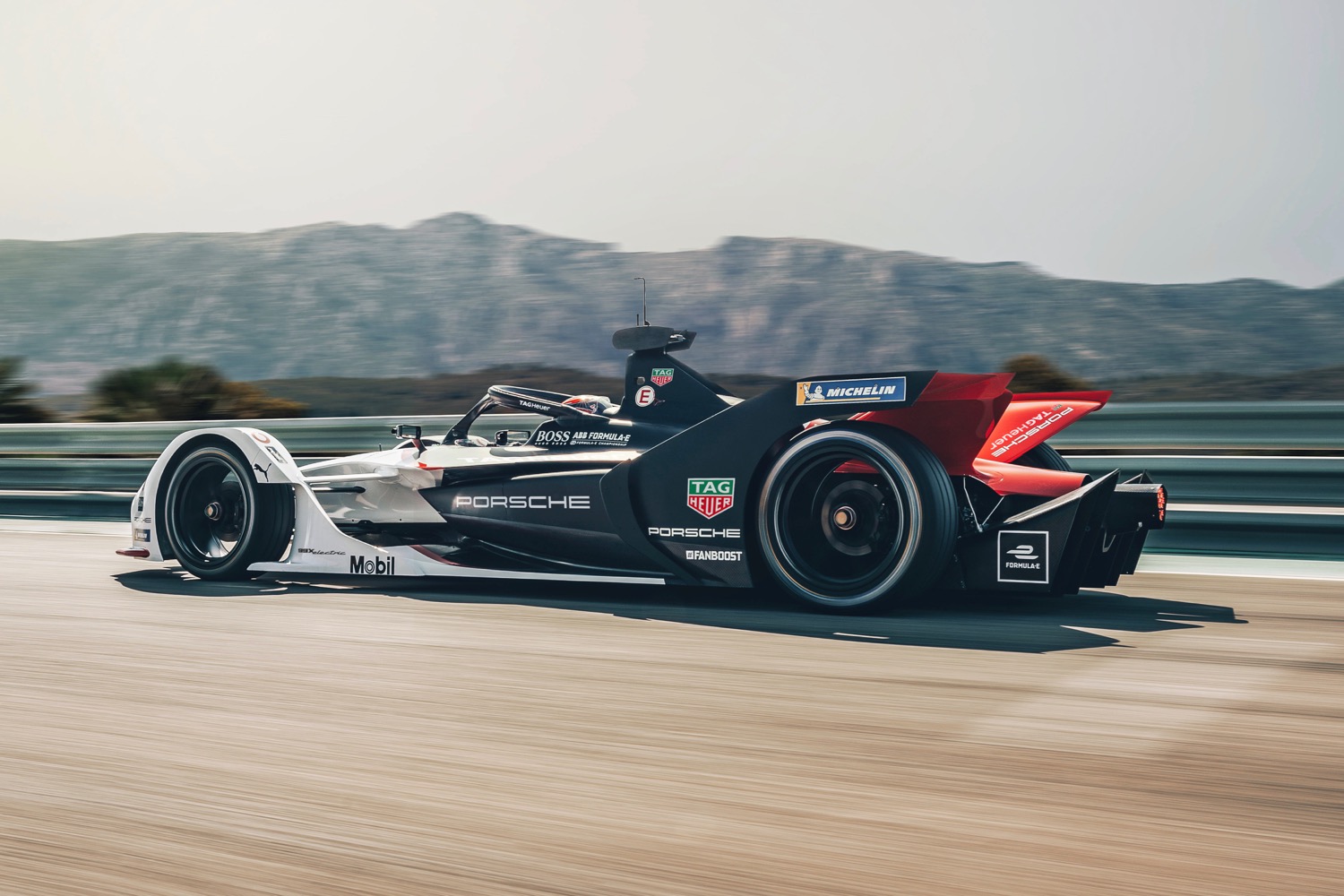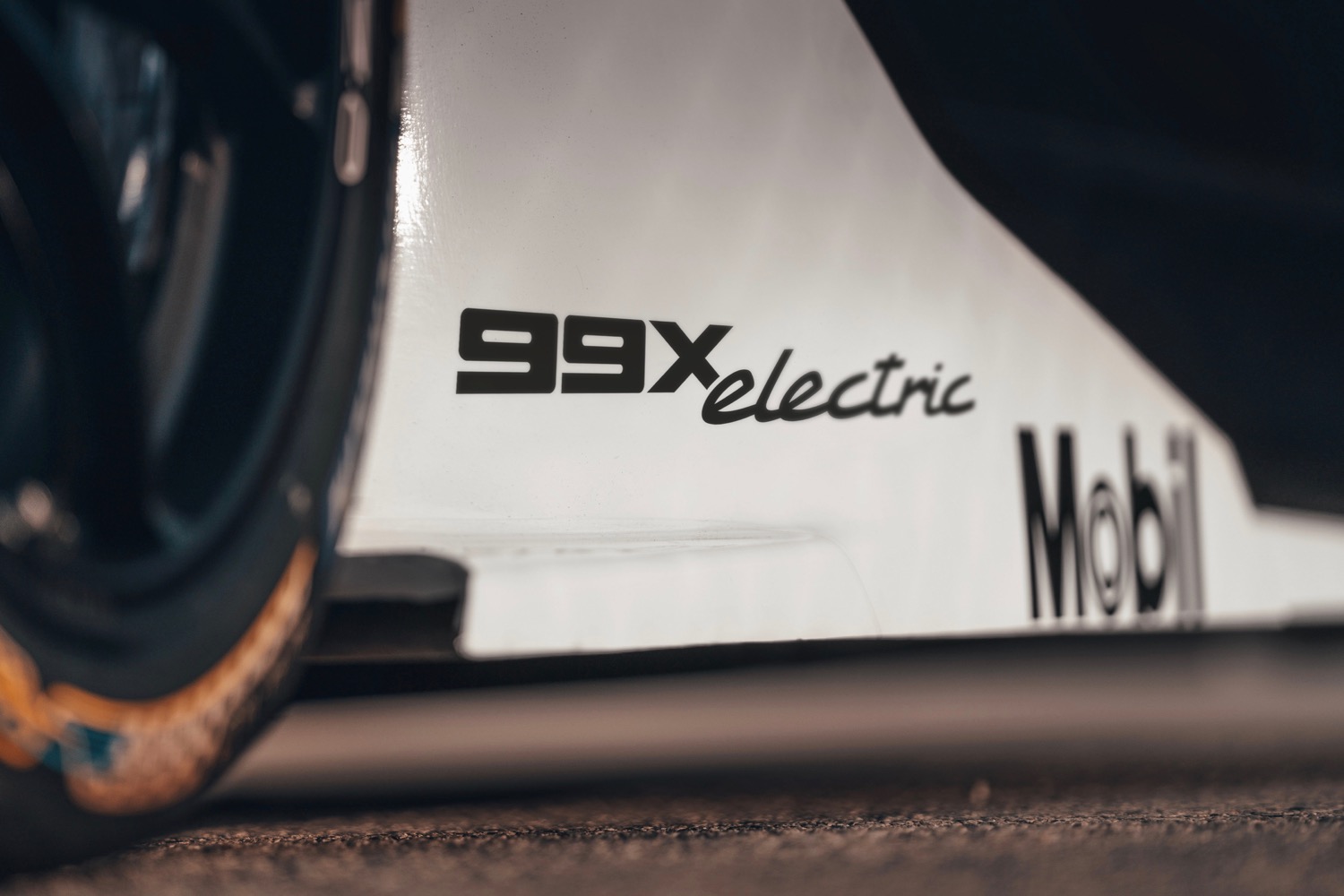Porsche has an enviable record in racing, and it’s about to launch an electric car, so it was probably only a matter of time before the German automaker entered Formula E. Porsche confirmed that it would join the all-electric racing series in 2018, starting with the 2019-2020 season. But the automaker is just now unveiling the electric car that will race in cities around the world beginning later this year.
The Porsche 99X Electric is based on the same “Gen 2” design as all other Formula E cars. Teams are required to use the same chassis and battery pack in order to keep costs down, and the racing close. Power output is also capped by the rules at 268 horsepower in race trim. That allows for zero to 62 mph in 2.8 seconds, and a top speed of 173 mph, according to Porsche.
Formula E rules also let drivers get temporary power boosts during the race. Fan Boost is awarded to the five most popular drivers, as voted by fans on social media. The Fan Boost winners get a short burst of 335 hp, which is also the output cars are tuned to for the qualifying sessions that determine the starting order. Driving over a specific area of the track unlocks Attack Mode, briefly bumping output up to 315 hp.
Teams aren’t allowed to mess with the power levels, but they are allowed to design their own powertrains. Porsche said it used experience from its 919 Hybrid race car — which won the 24 Hours of Le Mans and holds the record at Germany’s famous Nürburgring racetrack — to design an electric motor and other components that are both durable and efficient. Formula E isn’t all about speed: cars need to hit efficiency targets, which often require drivers to lift off the throttle and coast during a race. Any efficiency advantage Porsche gains could allow its drivers to go faster, longer.
An advantage of being one of the most prolific names in motor sports is that you have a deep pool of drivers to choose from when starting a new team. Both of Porsche’s Formula E drivers — Neel Jani and Andre Lotterer — have raced for Porsche in other series, including driving the 919 Hybrid at Le Mans. Jani comes to Formula E directly from Porsche’s sports-car racing program. Lotterer has raced in Formula E for the past two seasons with the Techeetah team.
The launch of Porsche’s Formula E program comes with high expectations. It will replace the Le Mans program — which was shut down over cost concerns — as Porsche’s highest-profile racing operation. Porsche is also about to launch its first production electric car, the Taycan, and executives are likely thinking of the old adage “win on Sunday, sell on Monday.” But Porsche faces stiff competition from established teams fielded by Audi, BMW, Jaguar, and Nissan, as well as Mercedes-Benz, which will also join Formula E for the 2019-2020 season.
